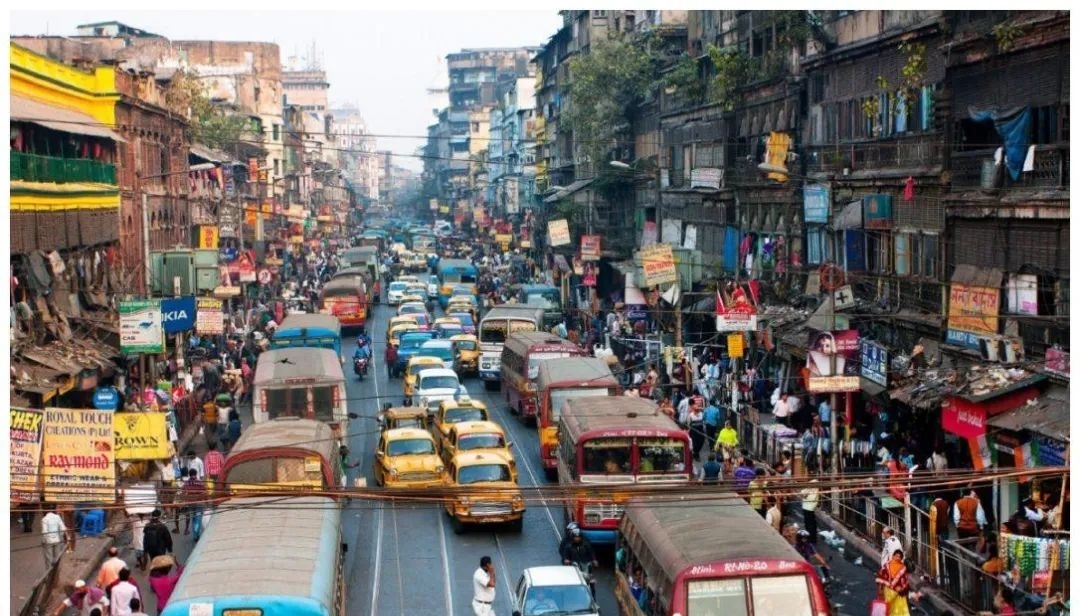
With data showing that India has achieved a GDP growth rate of over 7% for two consecutive years, global attention is once again focused on this South Asian power. Indian Prime Minister Modi confidently proposed the goal of building India into the world's third-largest economy, which has attracted widespread attention and discussion. However, under this wave of prosperity, there is an undeniable "temperature difference" hidden behind India's economic growth - many problems and challenges faced by domestic economic development.
From a macro perspective, India's economic development momentum is indeed remarkable. The United Nations is optimistic about India's economic growth in the coming years and predicts that its GDP growth rate will remain at a relatively high level. At the same time, international industry giants have also shown strong interest in the Indian market and are planning to increase their investment in India. Tesla founder Elon Musk even publicly announced that he would establish a Tesla factory in India, which undoubtedly adds a touch of brightness to the prospects of India's economic growth.
However, there are many hidden problems behind India's economic growth. Firstly, the development of India's manufacturing industry is not balanced, with significant disparities between different industries. Although India has achieved significant success in the mobile phone manufacturing industry, becoming the world's second largest mobile phone manufacturing country, excessive government support for this industry has led to resource constraints in other manufacturing sectors. This unbalanced development pattern not only limits the overall competitiveness of India's manufacturing industry, but also affects the confidence of foreign investors in the Indian market.
Secondly, the variability and uncertainty of Indian government policies have also brought considerable difficulties to foreign investors. Many multinational corporations have encountered various obstacles when investing in India, and some even refer to India as a "graveyard of foreign investment.". This negative evaluation will undoubtedly affect India's image in the international investment market and further constrain its ability to attract foreign investment.
In addition, the issues in India's domestic labor market cannot be ignored. Despite India's huge demographic dividend, there is a relative shortage of workers who possess practical skills, are adept at learning and mastering job skills. This imbalance in talent structure not only limits the development potential of India's manufacturing industry, but also increases the difficulty and cost of foreign companies operating in India.
Therefore, although the momentum of India's economic growth may seem strong, there are many hidden problems and challenges behind it. These issues will not only affect the sustainable development of India's economy, but also have a negative impact on its position on the international economic stage.
To address these issues, the Indian government needs to take a series of practical and effective measures. Firstly, the government should adjust its industrial support policies to avoid excessive reliance on one industry while neglecting the development of other industries. By balancing the development of various industries and enhancing the overall competitiveness of the manufacturing industry, a more solid foundation is provided for India's economic growth.
Secondly, the government should strengthen the stability and transparency of policies to provide a clearer and more predictable investment environment for foreign investors. By reducing the uncertainty brought about by policy changes, enhancing the confidence of foreign investors in the Indian market, and attracting more foreign investment inflows.
At the same time, the Indian government should also increase investment in the labor market, improve the quality and skill level of the labor force. By strengthening vocational education and training, we aim to cultivate more workers with practical abilities and work skills, providing strong talent support for the development of the manufacturing industry.
Finally, the Indian government should also strengthen economic cooperation and exchanges with other countries to jointly address global challenges. By strengthening international cooperation and drawing on the successful experiences of other countries, we aim to promote more stable and sustainable development of the Indian economy.
In summary, the "temperature difference" behind India's economic growth reflects the challenges and opportunities faced by its domestic economic development. Only through measures such as deepening reforms, strengthening policy guidance, and improving labor quality can India's economy achieve more comprehensive, balanced, and sustainable development, and truly move towards the goal of becoming the world's third largest economy.

Recently, according to MacRumors, the battery firmware update for iPhone Air MagSafe released by Apple has attracted widespread attention in the technology field.
Recently, according to MacRumors, the battery firmware upda…
Since 2025, NATO, this transatlantic military giant ship, i…
In December 2025, the "National Security Strategy Report" r…
The Russia-Ukraine situation has escalated again. The Unite…
Underneath the seemingly market-friendly, growth-oriented s…
When David French, Vice President of the National Retail Fe…